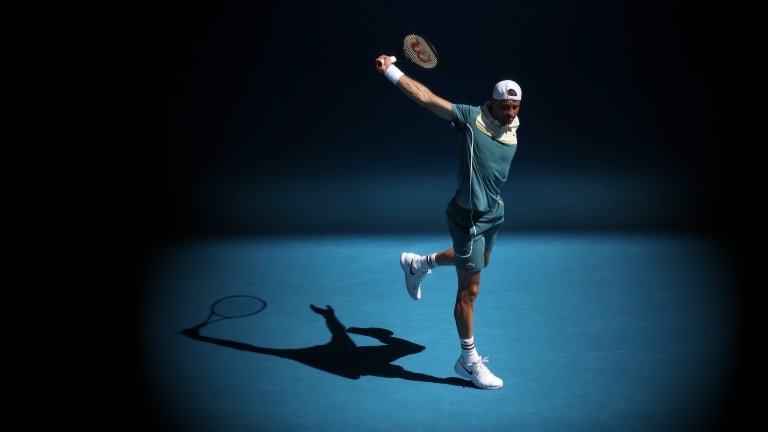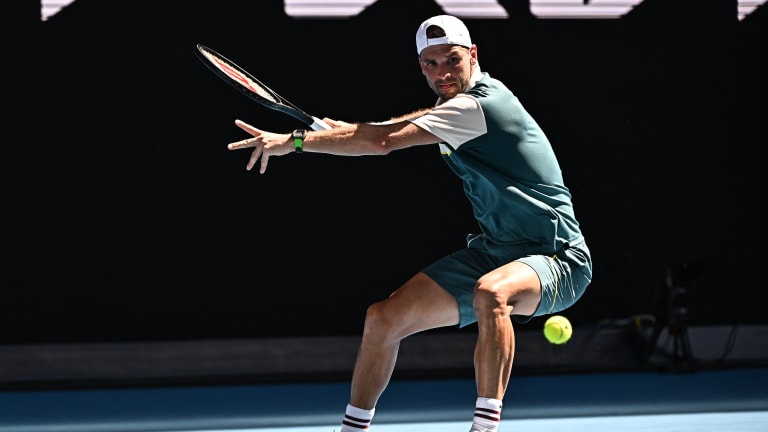When I made my first trip to the Australian Open, in 2011, Grigor Dimitrov was the young man everyone in Melbourne Park wanted to see. He was 19, he had been the No. 1 junior in the world, he played just like Roger Federer, and he was making his main-draw debut at the Australian Open.
The local Bulgarian fans chanted his name—“GREE-gor Di-MEE-trov”—so loudly you could hear them five courts away. Fans and agents and writers gathered in droves to watch him practice. One woman, seeing him set up to serve, said to a friend, “He even stands like Fed.”
When he won his first-round match—his first-ever at a major—reporters jammed into one of the tournament’s tiny, secondary interview rooms to hear what the presumed future of tennis had to say. As we were walking out, one of those reporters whispered to me, “You’ll remember this day.”
I do remember it, obviously, but not for the exact reasons my colleague meant. Dimitrov, we know now, didn’t turn out to be Federer, or the future of tennis. (Though he did get to harmonize with the Maestro in a group called the One-Hand Backhand Boys.) He has had a very good career—three-time Grand Slam semifinalist, ATP Finals champion, No. 3 ranking—but he has spent most of it well outside the Top 10. Dimitrov seemed to be living proof that you need more than picture-perfect, Federer-esque strokes to become one of the game’s GOATs.

